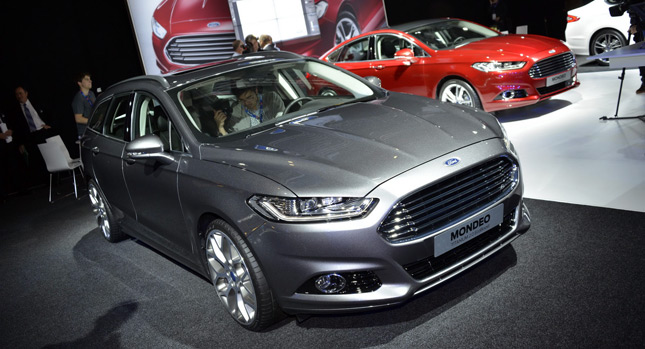The family car that Ford launched in North America as the Fusion made its way over to Europe as the all-new Mondeo, with its world premiere taking place at the 2012 Paris Auto Show.
Whereas the Fusion is offered exclusively as a four-door sedan, the Mondeo will also be available as a five-door liftback and a station wagon that was developed especially for European consumers.
Even though the concept of a small 1.0-liter engine under the bonnet of a D-segment car may sound absurd to some, the new Mondeo comes equipped with the Blue Oval’s 1.0-liter turbocharged three-cylinder petrol unit, which is a first for its class. Despite being small in size, it produces a zippy 123bhp, which is more than what you will find in many regular 1.6-liter naturally aspirated units.
“The Mondeo has always been at the forefront of Ford’s European passenger car range, but the all-new model is a watershed moment for large car customers and a new benchmark for features in this competitive sector”, said Ford’s vice president of product development Barb Samardzich.
The rest of the engine range includes 1.6- and 2.0-liter turbocharged EcoBoost petrols with up to 240bhp and a 1.6-liter diesel with ECOnetic technology that iFord says delivers best-in-class fuel consumption.
For the first time in its history, the Mondeo will also be available in a petrol-electric hybrid version that combines a 2.0-liter petrol engine with a 35kW lithium-ion battery for an output of 185-horses and an all-wheel drive diesel variant.
Transmission options will include six-speed manuals and dual-clutch automatic units.
Like its U.S. kissing cousin, the Mondeo will be equipped with a plethora of technology such as Advanced Active Park Assist, which supports perpendicular parking, Ford’s SYNC with MyTouch infotainment system, voice control, an 8-inch color touchscreen and the ability to act as a WiFi hotspot.
In the safety department, apart from the usual equipment such as airbags and stability control systems, the new Mondeo’s standard equipment includes rear inflatable seatbelts. By rapidly expanding in the case of an accident to disperse the forces generated at a body area five times bigger than conventional seatbelts, this safety feature aims to reduce neck and chest injuries of rear-seat passengers.



















































